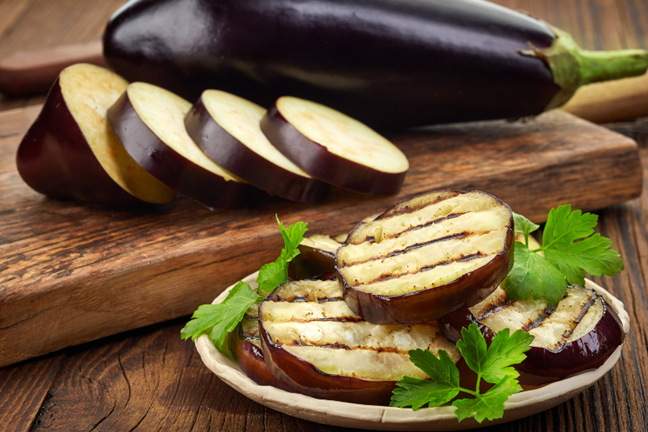Eggplants are quite happy in containers, but choose plants with smaller fruit, such as 'White Star' or Lebanese eggplants.
Step 1
Choose a pot at least 300mm wide and deep and position in full sun.
Step 2
Fill pot with a quality potting mix, like
Yates Potting Mix with Dynamic Lifter. Sow seeds.
Step 3
Feed weekly with Yates Thrive Vegie & Herb Liquid Plant Food.
Step 4
A regular harvest promotes new growth.
Step 1
Yates® Eggplant Blacknite is a vigorous, high yielding variety with striking purple-black skin. It's rich in vitamin C, thrives in hot weather and is a fantastic eggplant to grow at home.
Here's your simple eggplant sowing and growing guide:
Step 2
Sow Yates® Eggplant Blacknite seeds direct where they are to grow, in a sunny vegie patch, into well-drained soil that's been enriched first with some Yates Dynamic Lifter® Soil Improver & Plant Fertiliser. Or seedlings can be raised in punnets of Yates Seed Raising Mix and transplanted when they're around 6-8 cm high. Only transplant seedlings once the risk of frost has passed.
Step 3
Seedlings should pop up in around 10 -14 days.
Step 4
To encourage a great harvest, as soon as the seedlings are established start feeding each week with
Yates Thrive® Flower & Fruit Soluble Fertiliser, which is boosted with extra potassium which promotes flowering and fruit development.
Step 5
Water plants regularly to keep the soil moist. Mulching around the root zone will help retain soil moisture. Consistent soil moisture will help reduce the chance of blossom end rot.
Step 6
Eggplant fruit can be picked starting from 14 weeks after sowing.
Step 7
For best fruit quality, harvest when the skin is smooth and shiny. Cut fruit from the plant using secateurs, leaving 2 cm of stem on the fruit to improve storage.
Step 8
Regular harvesting will promote further flowering and fruiting.
Step 9
Monitor plants for pests such as whitefly and spider mites and control with regular sprays of
Yates Nature's Way® Vegie & Herb Spray Natrasoap®.














